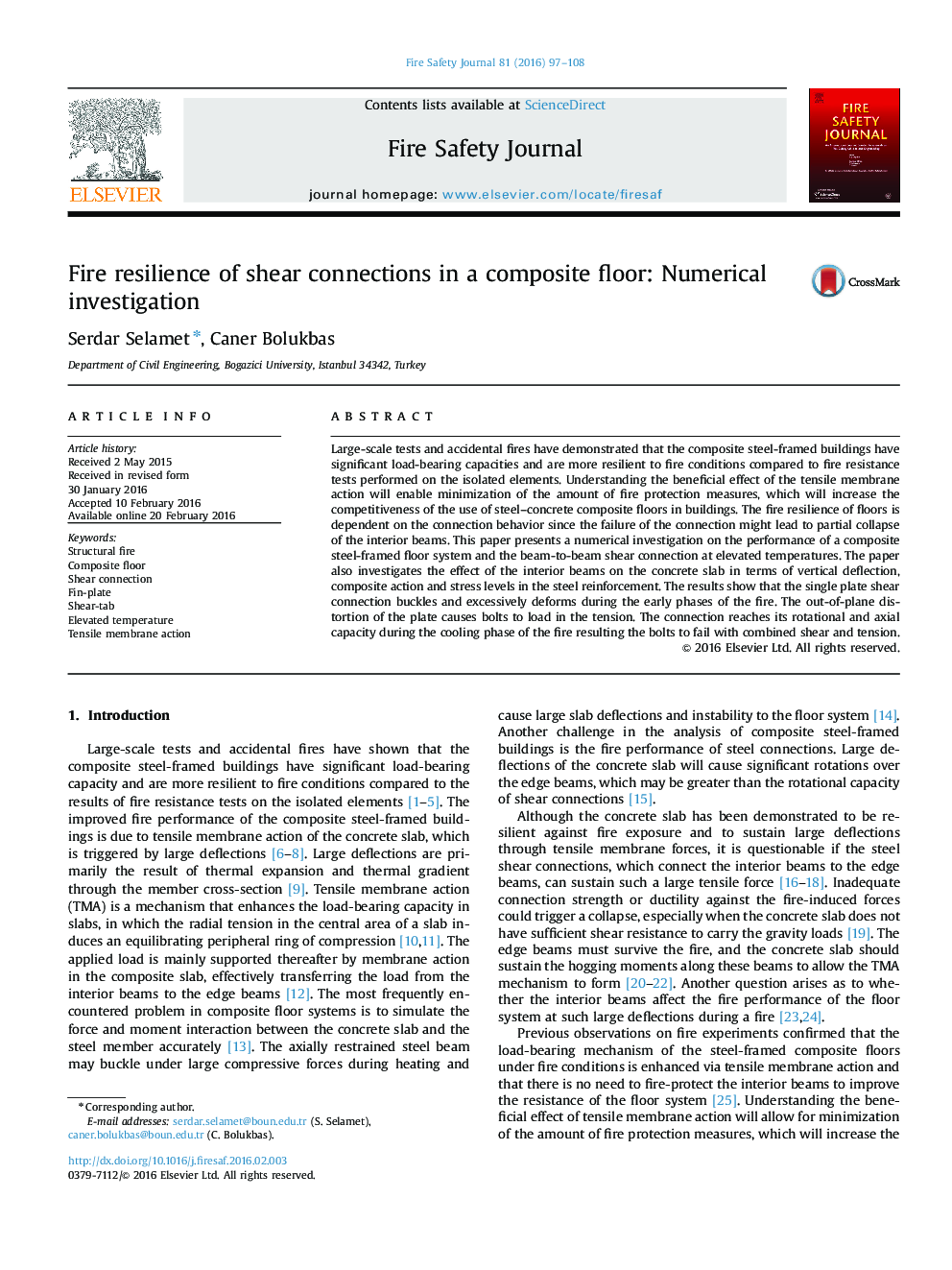| Article ID | Journal | Published Year | Pages | File Type |
|---|---|---|---|---|
| 269704 | Fire Safety Journal | 2016 | 12 Pages |
•A thermo-mechanical analysis of composite compartment under fire loading is conducted.•Stress distributions in the steel reinforcement mesh are investigated.•Understanding the mechanics of tensile membrane action will minimize fire protection.•Connection rotation tolerance is exceeded during fire due to large slab deflections.•Interior beams change reinforcement stress distributions due to composite action.
Large-scale tests and accidental fires have demonstrated that the composite steel-framed buildings have significant load-bearing capacities and are more resilient to fire conditions compared to fire resistance tests performed on the isolated elements. Understanding the beneficial effect of the tensile membrane action will enable minimization of the amount of fire protection measures, which will increase the competitiveness of the use of steel–concrete composite floors in buildings. The fire resilience of floors is dependent on the connection behavior since the failure of the connection might lead to partial collapse of the interior beams. This paper presents a numerical investigation on the performance of a composite steel-framed floor system and the beam-to-beam shear connection at elevated temperatures. The paper also investigates the effect of the interior beams on the concrete slab in terms of vertical deflection, composite action and stress levels in the steel reinforcement. The results show that the single plate shear connection buckles and excessively deforms during the early phases of the fire. The out-of-plane distortion of the plate causes bolts to load in the tension. The connection reaches its rotational and axial capacity during the cooling phase of the fire resulting the bolts to fail with combined shear and tension.
